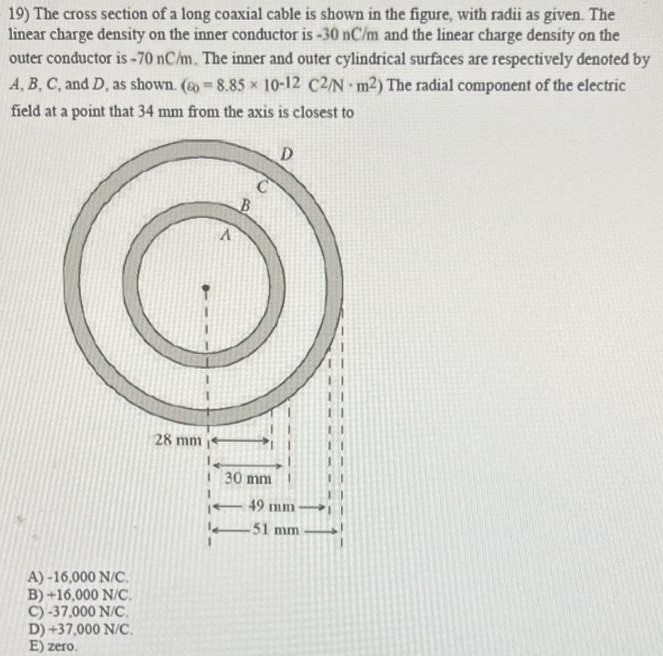The cross section of a long coaxial cable is shown in the figure, with radii as given. The linear charge density on the inner conductor is −30 nC/m and the linear charge density on the outer conductor is −70 nC/m. The inner and outer cylindrical surfaces are respectively denoted by A, B, C, and D, as shown. (ε0 = 8.85×10−12 C2/N⋅m2) The radial component of the electric field at a point that 34 mm from the axis is closest to A) −16,000 N/C. B) +16,000 N/C. C) −37,000 N/C. D) +37,000 N/C. E) zero.
